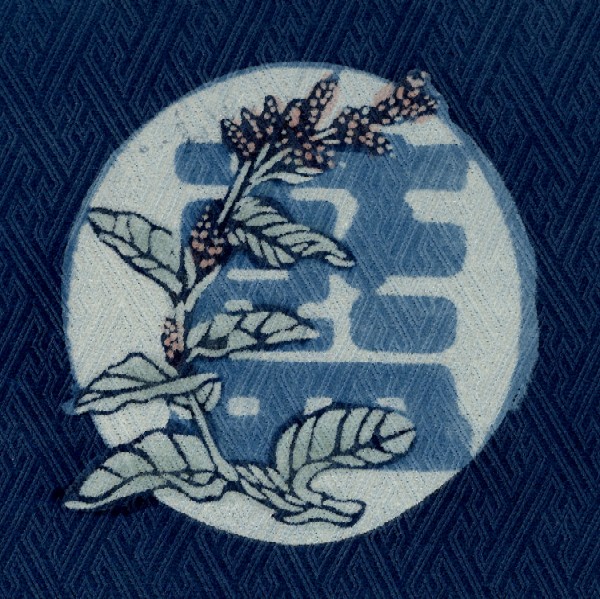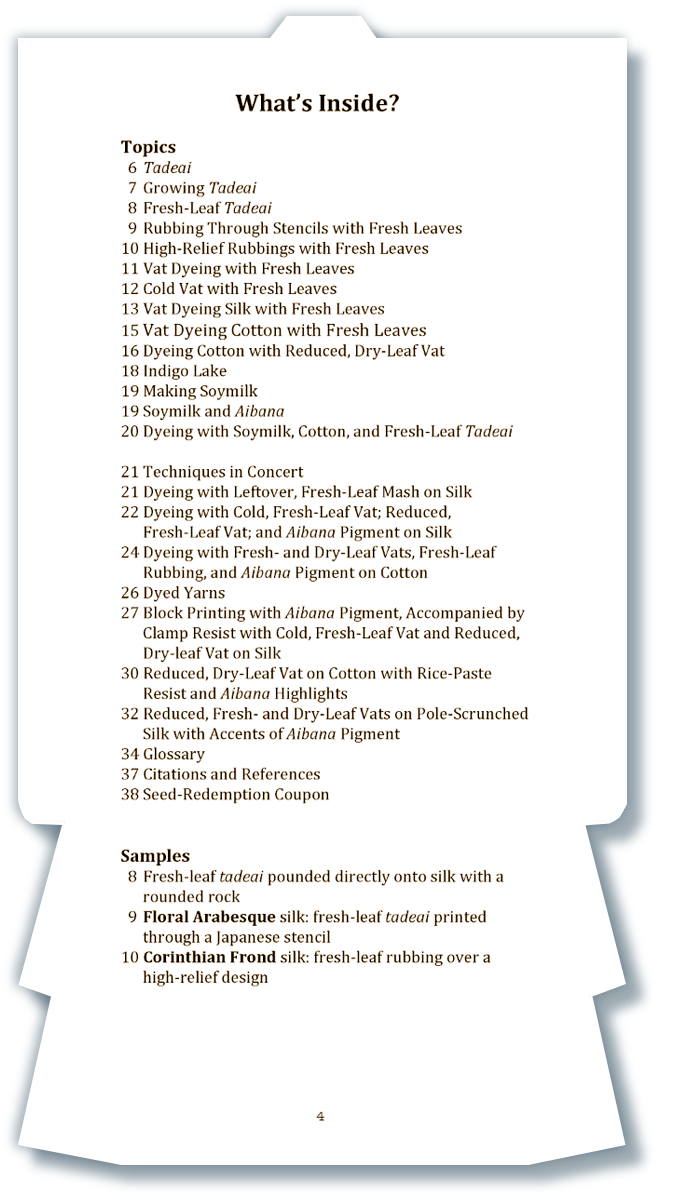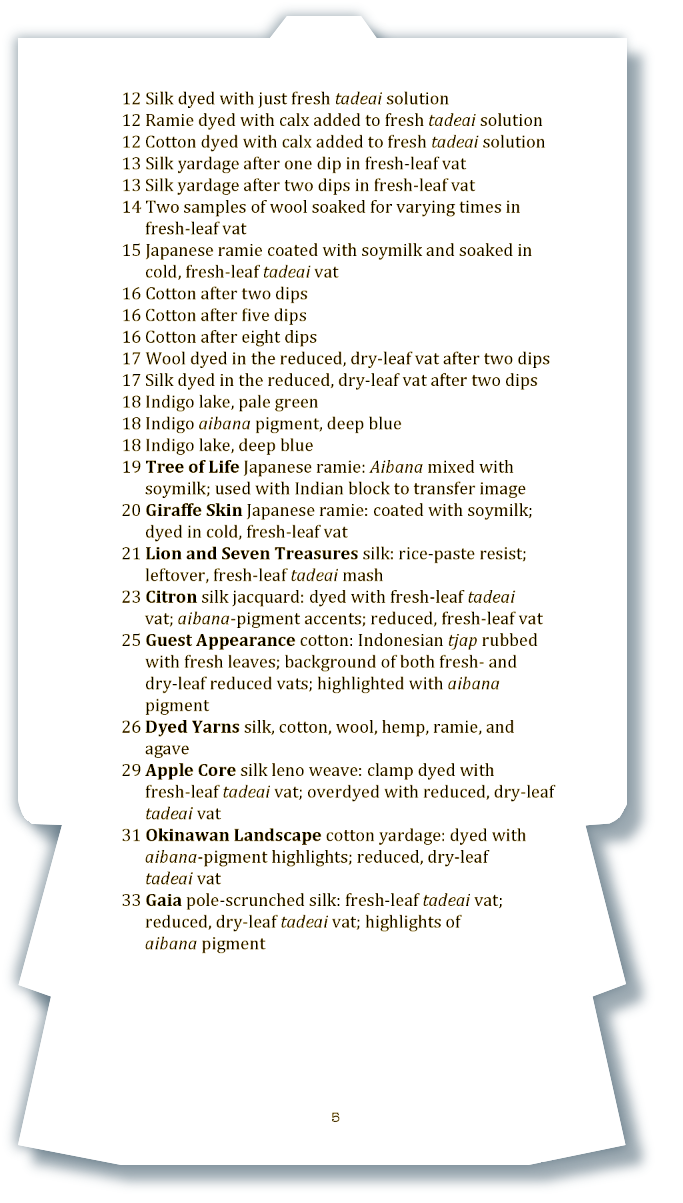Book Review: Dyeing with Fresh-Leaf Indigo with John Marshall
Review by Deb McClintock
I cannot wait for my Japanese Indigo or Tadeai to grow this year in the Texas Hill Country. It is a new resource that provides lots of color choices to experiment with to create beautiful effects on cloth or skeins. The gateway to this experimentation is John Marshall's new limited-edition hand-made book Dyeing with Fresh-Leaf Indigo, which should be in every weaving and spinning guild library. The subject of this 38 page book is Tadeai, or Japanese Indigo (Poligonum tinctorium, also called Persicaria Tinctoria).

For the uninitiated, John has given a great rundown on the varieties of indigo in his blog here: http://johnmarshall.to/blog/2015/01/23/just-what-is-indigo/.
Why should this book be in our guild or academic libraries? We have on our side of the ocean an indigo advocate who has translated, gleaned from his extensive Japanese library and tested the best of the Tadeai or Japanese Indigo recipes. Not only is the traditional reduced pot discussed, this book provides access to variations of fresh Japanese indigo uses.
John has included actual exquisite hand dyed samples of Japanese cloth in his book, each with instructions on how it was created. Small skein samples are also included for comparison. John also goes on to offer concrete ideas of using the techniques in concert with each other.
Recipies in this book provide the opportunity to explore using fresh indigo on cotton with the appropriate mordant rather than using the reduced vat; the use of rice vinegar to adjust pH; and alternatives for vat dyeing using dried rather than composted indigo, an exciting option for those of us who live in climates where composting is not an option. I said, dried, not composted–take note.
Keeping this book on hand for reference in your library for guild members as they learn about growing and using Japanese Indigo is a great guild service, as there is great potential for group experimentation with this book. The level of comprehensive information it contains for the active dyer is not available in one place. The working detail is spot on.
When you browse to the link below you might gasp a bit at the price for this hand-made limited-edition book, but consider the amount of expertise and work that has gone into compiling and testing the recipies and creating the samples. Remember also that your guild or school needs this book as a reference for all students.
To whet a dyer's information appetite below are the table of contents, which may also be found online in the limited edition link (http://johnmarshall.to/blog/2015/02/05/dyeing-with-fresh-leaf-indigo-limited-edition-2/).
 |
 |
| Copyright by John Marshall | Copyright by John Marshall |
For those of you who might not be able to afford John's book, his blog has some of the recipes on it and more are planned. The recipies are supported by his online "project of the week" blog entries. Here is a sampling:
Tadeai Rubbings: http://johnmarshall.to/blog/2015/01/23/fresh-leaf-indigo-its-magic/.
Fresh Indigo on Cotton & Silk: http://johnmarshall.to/blog/2015/01/23/cold-water-fresh-leaf-indigo-vat-dyeing/.
In addition, a CD/PDF version is planned further down the road. Personally, I'll be scanning my book and laminating it to create a second version for use by the dyepot. One must protect one's color investment!
Dyeing with Fresh-Leaf Indigo with John Marshall
St. Titus Press, Covelo, CA, 2014
38 pages, 12 3/4 inches by 6 7/8 inches
No ISBN Number
Order from: http://johnmarshall.to/blog/2015/02/05/dyeing-with-fresh-leaf-indigo-limited-edition-2/
 Turkey Red Journal
Turkey Red Journal